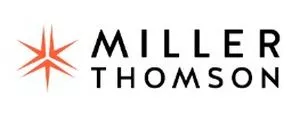Businesses today face a growing risk of seeing a major customer become insolvent or seek protection under the Bankruptcy and Insolvency Act (BIA) or the Companies' Creditors Arrangement Act (CCAA). In such cases, the consequences for your operations and cash flow can be severe.
Here are some concrete steps you should take immediately if you learn that one of your customers is in financial difficulty or has filed for court protection. One of the first things to do is identify which type of protection your customer is under and obtain any available documents or orders.
1. Immediately cease all new deliveries and services
If your customer is insolvent, each additional delivery or service increases your exposure, with no guarantee of payment. Notify your entire team as quickly as possible. Before delivering anything more, ask for payment in advance (cash if possible). Once a trustee is appointed, you can obtain written confirmation that amounts owed will be paid on a priority basis going forward. There is no automatic priority for receivables arising after the customer has obtained protection. You therefore need a clear agreement approved by the trustee, and this may sometimes cover receivables incurred prior to the start of proceedings.
2. Read your contracts and securities carefully
Do you have a purchase-money security interest clause? A security interest registered in the Register of Personal and Movable Real Rights? Have you signed any subordination clauses for these security interests? Do you have a personal undertaking from an officer of the company? These protections can make a big difference. With guarantees like these, you can assert a right of repossession or be treated as a secured creditor. This is why you need to gather your documents and assert your rights as soon as possible.
3. Act quickly to assert your right to repossession
If you have specific rights—for example, if you delivered goods less than 30 days before the customer filed for protection and they have not been paid for—you must act with urgency. You may have a right of repossession, provided you comply with the deadlines and formalities set out in the BIA. Some remedies are strictly regulated, and failure to act may result in the loss of your rights. Also, don't delay in consulting a lawyer to find out your rights and send a formal notice to the trustee.
4. Submit your proof of claim
If you want any hope of your receivables being paid once the customer has initiated a process, arrangement, proposal or bankruptcy, you must file a proof of claim with the trustee or monitor within the required timeframe. Even if the expected recovery rate is low, not filing such proof would be tantamount to waiving your rights.
Your lawyer can help you with this, as in some cases it will determine your rank and eligibility for the dividend.
5. Consider set-off or compensation
If you yourself owe amounts to the insolvent customer (e.g
.., if they have provided you with services
or products), you may be able to use the set-off mechanism to
reduce your exposure. Under certain conditions, this allows you to
cancel reciprocal debts. Note, however, that set-off does not apply
in all cases, and specific rules apply in insolvencies.
Arrangements can be made in advance for set-off outside the normal
parameters.
6. Follow the proceedings and participate actively
As a creditor, you have the right to be informed, to vote on settlement proposals, and even to object to certain decisions. Too often, commercial creditors ignore these proceedings and lose all influence over the outcome of the case. What's more, you need to intervene at an early stage and assert your rights as soon as possible, otherwise you could find yourself faced with a fait accompli.
Make sure you are on the creditors' list, and read the trustee's or monitor's reports carefully. You can also join forces with other creditors to defend common interests.
7. Watch out for preferential or fraudulent transactions
Some transactions made before a customer files for protection may be challenged if they unduly favour a creditor or are done for the purpose of removing assets. If you find out that other creditors have recently been paid, or that assets have been transferred to associated companies, it may be possible to have these transactions cancelled.
It is also important to assert any rights you may have against sureties.
8. Review your credit management practices
If you find yourself involved in bankruptcy proceedings arising from a customer's insolvency, this could be a wake-up call to review your business practices. Here are a few changes you could make:
- Get more information on a customer's creditworthiness before granting credit, and keep updating it;
- Require guarantees or deposits for large orders or when appropriate;
- Implement policies for close monitoring of receivables;
- Ensure that the people in your organization communicate effectively with each other to share all relevant information about your customers; and
- Re-evaluate your methods and requirements for the customer in question.
Conclusion
A customer's insolvency can have a domino effect on your business. But if you take the right steps quickly and consult your legal and financial advisors, you can limit losses and better position yourself for the future.
The content of this article is intended to provide a general guide to the subject matter. Specialist advice should be sought about your specific circumstances.



